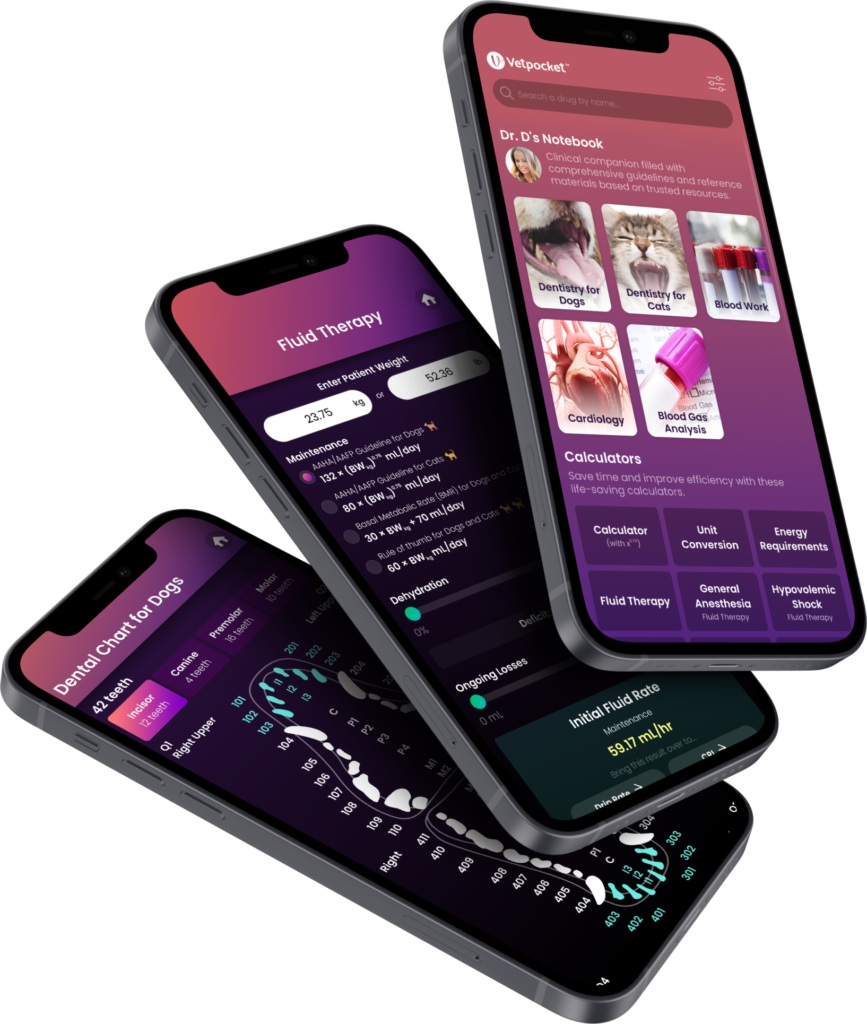What is it?
Ancylostomiasis is a parasitic infection of the small intestine caused by hookworms. Hookworms are nematodes that attach to the wall of the small intestine and feed on the host’s blood.
Ancylostoma braziliense commonly causes cutaneous larval migrans. Ancylostoma tubaeforme and Uncinaria stenocephala do not clinically cause much of a concern.
Note that the most common hookworm of the dog, Ancylostoma caninum, which is the hookworm that most commonly causes blood loss and hemorrhagic enteritis, can sometimes infect cats.
Cats typically do not harbor a significant amount of hookworms as compared to dogs, and the ones they do carry typically are not as damaging as the ones carried by dogs.
Where can it be found?
It can be found worldwide.
How does infection occur?
Transmission is primarily via the fecal-oral route. Infected cats pass eggs through their feces into the environment. First-stage larvae hatch into second-stage larvae, and then into infective third-stage larvae in the environment. Another cat can then become infected by ingesting infective third-stage larvae from the environment (direct life cycle). Other ways in which infection can occur are through infective third-stage larva penetrating the cat’s skin (direct life cycle), or via ingesting a paratenic host (a host that harbors larvae in its tissues, e.g.rodents) containing an infective third-stage larva (indirect life cycle).
Note that third-stage larvae can additionally penetrate the gastrointestinal mucosa and the oral cavity, and then migrate to the lungs via the bloodstream. Third-stage larvae can also migrate to the definitive host’s tissues and become dormant or arrested. Lung migration can lead to pulmonary damage.
What are the clinical signs?
It may be asymptomatic (have no clinical signs). If there are clinical signs, clinical signs include diarrhea, dark or black feces, bloody feces, constipation, vomiting, failure to thrive, anorexia, dehydration, poor coat, abdominal distension, weight loss, weakness, pale mucous membranes, and dermatitis. Anemia (including iron-deficiency anemia), shock, and death are possible with significant infections in young patients. Coughing due to lung migration is also possible.
How is it diagnosed?
Diagnosis is commonly made via fecal flotation. Another diagnostic tool is PCR (polymerase chain reaction).
What are the treatment options?
Some of the medications your veterinarian may prescribe are pyrantel pamoate, fenbendazole, or milbemycin oxime. If your pet is dehydrated, additional treatment such as IV fluid therapy may be needed. Depending on the clinical and lab findings for your pet, additional treatment options may include correcting electrolyte abnormalities, iron supplementation, blood transfusion, gastrointestinal protectants, and/or a high-protein diet.
A follow-up fecal flotation is recommended 1 to 2 weeks following treatment.
How can it be prevented?
Prevention consists of deworming kittens, keeping your pet on good quality anthelmintic monthly prevention, as well as picking up feces promptly from the environment to help limit environmental contamination and spread of disease. Prevent your pet from coming into contact with another animal’s feces. Predation prevention to help prevent infection via ingestion of a paratenic host.
The Companion Animal Parasite Council recommends monitoring for disease by performing fecal flotations approximately 4 times in the first year, and then approximately 2 times per year for patients on good quality monthly prevention.
Can my cat infect humans or dogs?
Zoonosis (infectious disease transmissible from non-human animals to humans) is possible by larvae penetrating human skin, which usually happens when a person walks or sits on contaminated soil or sand with bare feet. Cats can infect dogs.
For Veterinary Professionals, refer to our app, VetpocketTM, for more in depth reference material including treatment dosing guidelines.
*Disclaimer: The information is not intended to replace clinical judgment or guide individual care in any matter. Please check any information and values prior to use and use at your own risk.


